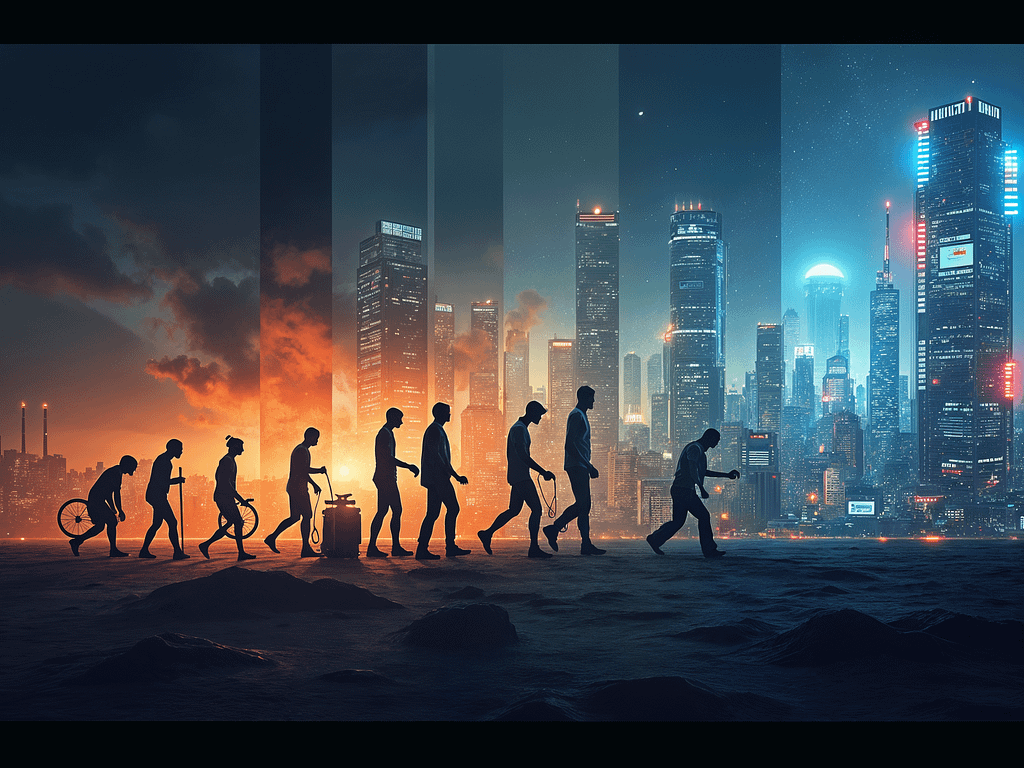Introduction: The Journey of Technological Progress
Technology is a key part of human history, shaping our societies and daily lives. It includes the tools, systems, and methods we create to solve problems and improve our quality of life. Understanding how technology has evolved is important because it shows us how past innovations have led to modern advancements. From simple tools made in prehistoric times to the advanced digital technologies we use today, each era has played a vital role in human progress. This exploration of technological history not only highlights significant milestones but also emphasizes the need to adapt to ongoing changes in technology.
Early Technological Innovations: The Foundation of Progress
The origins of technology date back to prehistoric times when early humans made simple tools from stone and wood. These basic inventions set the stage for future advancements. The development of agriculture around 10,000 BC was a major turning point, allowing people to move from nomadic lifestyles to settled communities. This change led to population growth and more complex social structures.
Key ancient technologies, such as writing systems, metallurgy, and architecture, further advanced civilization. For example, the Sumerians invented writing around 3200 BC, which improved record-keeping and communication. Advances in metallurgy produced stronger tools and weapons, while architectural feats like the Egyptian pyramids demonstrated engineering skills and reflected societal values.
The Industrial Revolution: A Technological Paradigm Shift
The Industrial Revolution, starting in the late 18th century, marked a significant change in technological history. Factors like population growth, better farming methods, and access to natural resources drove this transformation. Inventions such as the steam engine changed transportation and manufacturing.
The introduction of textile machinery changed how goods were produced, leading to mass production that increased efficiency and reduced costs. This period also saw urbanization as people moved from rural areas to cities for work. The Industrial Revolution not only changed economic structures but also reshaped social dynamics by creating new social classes.
The Age of Electricity and Electronics
The discovery and use of electricity was another crucial moment in technological evolution. Inventions like Thomas Edison’s light bulb changed daily life by allowing people to work longer hours. Telecommunications developed with devices like the telegraph and telephone, transforming communication over distances.
As electronic components were created in the 20th century, early computers began to emerge. These machines laid the groundwork for modern computing by introducing concepts like binary code and data processing that evolved into today’s advanced systems.
The Digital Revolution: Dawn of the Information Age
The shift from analog to digital technology has been one of the most important changes in recent history. Personal computers became widely available in the late 20th century, giving individuals unprecedented access to information and creative tools.
The internet’s creation and rapid growth changed how we communicate, share information, and do business globally. As noted by Internet Society, “the internet has transformed communication,” making it a vital part of everyday life for billions of people.
The Mobile Era: Technology in the Palm of Your Hand
Mobile phones have changed dramatically since they were first introduced; they are now essential devices that keep us connected. Smartphones combine many functions—serving as communication tools, cameras, navigation systems, and gaming consoles.
The rise of mobile applications has improved our daily lives by providing instant access to services like banking and entertainment. This constant connectivity has significant societal implications; it affects how we interact and raises concerns about privacy and mental health due to our ongoing engagement with technology.
Artificial Intelligence and Machine Learning: The Next Frontier
Artificial Intelligence (AI) is one of the most transformative technologies today, impacting various sectors like healthcare, finance, and transportation. AI enables machines to learn from data patterns without needing explicit programming.
Key milestones in AI development include advancements in natural language processing (NLP), which help machines like chatbots and virtual assistants (e.g., Siri or Alexa) understand human language better. As Andrew Ng famously stated, “AI is the new electricity,” highlighting its potential impact across industries.
Current applications include predictive analytics that help businesses optimize operations based on customer behavior and autonomous vehicles that navigate complex environments safely.
The Future of Technology: Emerging Trends and Possibilities
Looking ahead, emerging technologies like quantum computing promise groundbreaking advancements in fields such as cryptography and material science. According to Pluralsight, “advancements will likely reshape industries entirely.”
Additionally, biotechnology and nanotechnology are expected to play crucial roles in addressing global challenges like climate change while enhancing human capabilities. However, these rapid advancements come with challenges that require careful consideration of ethical implications regarding privacy rights and security measures to protect sensitive data.
Conclusion: Reflecting on the Technological Journey
In summary, the evolution of technology showcases remarkable progress—from the simple tools used by early humans to the complex digital systems shaping modern society today. Each stage reflects humanity’s creativity and adaptability in response to changing circumstances. As we navigate the fast pace of change, it is increasingly important to prioritize responsible innovation and ensure ethical considerations guide future developments. Understanding this journey empowers us to make informed decisions about harnessing potential benefits while managing the risks associated with emerging trends.



